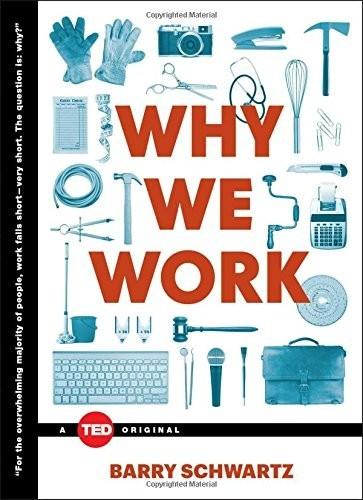
Why We Work
by
Barry Schwartz
Published 31 Aug 2015
But in real life, things don’t always work out this way. At least in the social sciences, proposing theories, rather than being beholden to facts, can shape facts in a way that strengthens the theories. You build that path and then force people to walk on it, perhaps by roping off the grass. “If you build it, they will come.” This is the mantra that the main character in the movie Field of Dreams keeps hearing as he turns his farmland into a baseball park in the middle of nowhere. He builds it, and they do come. In this chapter, I will try to show that at least sometimes, when social scientists build theories, the people come.
…
In this chapter, I will try to show that at least sometimes, when social scientists build theories, the people come. That is, the people are nudged into behaving in ways that support the theories. This chapter, then, is an attempt to resolve a battle between these metaphors. The “watch where they walk, then pave it” metaphor argues that the empirical data shape the theories people develop. The “if you build it, they will come” metaphor argues that theories shape data. I will attempt to defend the second metaphor. The battle here is one that has been going on in more familiar territory for years. Does the market cater to consumer desires or does it create consumer desires? Do the media cater to people’s tastes in news and entertainment or do the media create those tastes?

Street Smart: The Rise of Cities and the Fall of Cars
by
Samuel I. Schwartz
Published 17 Aug 2015
Boiled down to the basics, induced demand is what happens when the supply of a good increases and more of that supply then gets consumed: when a host puts out more cheese and crackers, her guests eat more cheese and crackers. What this means in road (and bridge, and tunnel) building is not just obvious but as well documented as anything in transportation engineering: “If you build it, they will come.” If you build more lanes on the expressway, more cars and trucks will use it. If you’re lucky, congestion remains as bad as it was before you spent $50 million trying to relieve it; if you’re not, it gets worse. It’s like the Red Queen from the other side of the looking glass, who tells Alice, “Here, you see, it takes all the running you can do, to keep in the same place.
…
See under Cars Driving licenses, 72–73 Duke University, 95 Duranton, Gilles, 46 East Tremont Neighborhood Association, 34 Ebbets Field, 5, 15, 43, 231, 245 Economic hardship, and Millennials, 70–72 Edison, Thomas, 5 Eisenhower, Dwight David, 15, 19, 103 Elevators, versus stairs, 136 Elumbaugh, Rick, 120 Embarcadero Freeway Revolt, 34–37 Engineering News–Record, 3, 16 Engineers/engineering and construction costs, 39 cost-benefit equations of, faulty premise of, 59 and disappearing traffic phenomenon, 47 and estimated speed and safety, 39–42 and foot traffic study, 144–146 and GI Bill of Rights, 18 and “if you build it, they will come,” 46–48 and Interstate Highways System, 17–19 and multimodal transportation system, 61 and predicting future transportation needs, 60–61 railroad, 17–18 and road-building techniques, 18–19 and safety innovations, 18–19 and smart growth, 61 and wider versus narrower lanes, safety of, 58, 59–60, 60n England, 103, 158, 159 Environmental Defense Fund, 36–37 Environmental Impact Statement, 245–246, 247 Environmental Protection Agency, 37, 44, 51–52 Environmentalism, 36–37, 44, 62, 72, 226 Envision Utah, 192 Escalators, versus stairs, 136 Europe, streetcars in, 44, 103, 176 Exercise, 124 health benefits of, 93–97, 134 See also Cycling; Health; Walking Federal-Aid Highway acts, 15, 16, 17, 18, 36 Federal-Aid Road Act of 1916, 14–15 Federal Highway Administration, 20, 73, 194 Federal Housing Authority, 21 Federal Housing Authority (FHA), 158–159 Federal roads bill, 14–15 FHA.
…
Petersburg, 124 Taxi service, 75, 199, 200, 203 Taylor, Frederick Winslow, 142–143 TEA-21 (Transportation Equity Act for the 21st Century), 213–214, 214n Texas A&M’s Transportation Institute study, 104 Todt, Fritz, 15 “Toll Roads and Free Roads,” 16 Tompkins, Tim, 139 TomTom, 210 Traffic and community, connection between, 100–101 congestion, 104, 105–109, 207 and disappearing traffic phenomenon, 47 flow, and walking, 144–146, 145n hours stuck in, 69 and “if you build it, they will come,” 46–48 and level-of service, 41–42 and most dangerous metropolitan areas in America, 124 and per capita traffic delay and per capita GDP, correlation between, 104–105 and refuge islands and raised medians, 124 and speed limits, 123–124 and walkability, 123–125 Traffic calming, 123–124 Transit strike of 1980 (New York City), 153–156 Transit Workers Union, 153 TransitAPP, 195 TransitCenter Who’s on Board report, 84 TransLink (Vancouver), 161–163 TransMilenio (Bogota, Colombia), 222 Transportation alternative forms of, 63 costs, 110–112, 111 (table) See also Transportation equity; Transportation infrastructure; Transportation networks; Transportation policy; Transportation systems Transportation Alternatives, 53 Transportation equity, 211–224, 241 in Atlanta, 218–219 in Bogota, 220–224 in Buffalo, 217–218 in Houston, 220 in New York City, 211–212 and Plessy v.

Connectography: Mapping the Future of Global Civilization
by
Parag Khanna
Published 18 Apr 2016
CHAPTER 8 INFRASTRUCTURE ALLIANCES Getting Grand Strategy Right Post-Ideological Alliances BOX: Piraeus: China’s European Gateway From Sanctions to Connections Beware Friendship Bridges Oil Is Thicker Than Blood CHAPTER 9 THE NEW IRON AGE Iron Silk Roads Across the Heartland BOX: “Mine-Golia”: Where (Almost) All Roads Lead to China Kublai Khan’s Revenge: The Return of Sino-Siberia Iran: The Silk Road Restored North Korea: An Iron Silk Road Through the Hermit Kingdom The Supply Chain Strikes Back CHAPTER 10 HOPSCOTCH ACROSS THE OCEANS An Empire of Enclaves “Mobile Sovereignty” Sovereigns of the Sea Escaping the “Malacca Trap” The Maritime Silk Road Atlantic Cities The Capital of the Arctic PART FOUR: FROM NATIONS TO NODES CHAPTER 11 IF YOU BUILD IT, THEY WILL COME Dubai: Home to the World First Port of Call BOX: Lagos: Africa’s Global City CHAPTER 12 GETTING ON THE MAP Pop-Up Cities From Exclave to Enclave China’s Supersize SEZs Master Planning for Megacities City Building as State Building Leapfrogging to Hybrid Governance CHAPTER 13 SUPPLY CHAINS AS SALVATION Who Runs the Supply Chain?
…
*10 Soviet infrastructure had so crumbled in the Arctic region that food from Africa was sometimes delivered on nuclear submarines, with sacks of potatoes instead of missiles in the tubes. *11 The combination of Syria’s perennial droughts and civil war prompted the very first withdrawal of seeds from the vault in 2015. CHAPTER 11 IF YOU BUILD IT, THEY WILL COME DUBAI: HOME TO THE WORLD The world’s most visited city, the most diverse city, the city that never sleeps…New York, of course. London, for sure. Paris, once upon a time. Soon, however—and for quite some time after—that city will be Dubai. Sitting at the crossroads of West and East, North and South, Dubai is brashly claiming the title of “center of the world.”
…
From five-star hotels on Sheikh Zayed Road itself to seedy motels in Deira, the law of supply and demand clearly outweighs Islamic edicts against adultery or prostitution. There is no doubt that many Arabs go to Dubai to forget that they live in Muslim countries. — IF EVER A CITY embodied the phrase “If you build it, they will come,” it is Dubai, the fastest-growing city in the world. Its population tripled from 1968 to 1975, doubled from 1989 to 2009, and will double again to an estimated 4.5 million people by 2020. Americans who’ve run out of luck on Wall Street, Europeans seeking lower taxes, Africans fleeing poverty and tyranny, Indians, Russians, and Iranians with suitcases of money, Filipino hotel workers, and Chinese enterprise owners all coalesce in what has become the capital of the rest of the world.
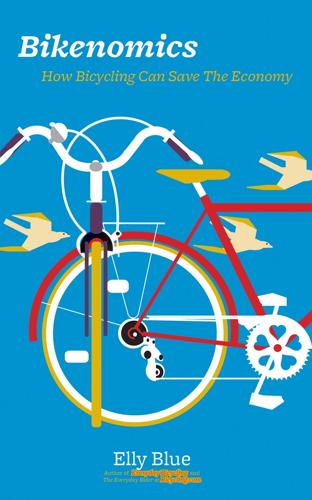
Bikenomics: How Bicycling Can Save the Economy (Bicycle)
by
Elly Blue
Published 29 Nov 2014
What’s more, the same error appears in many official measures of traffic congestion—they forget to take into account that when people are able to drive faster, they choose to drive farther. New users flock to new roads, and everyone who already drove there now feels free to use it even more. In a nutshell: If you build it, they will come. The most responsible path in most cases is simply to not build new roads. But the forces advocating for that option are usually not as well-funded or connected as their adversaries. Nobody wants a road construction or widening project in their own back yard, so they tend to be built in the backyards of the people with the least political clout—low-income communities where rates of car ownership are lowest, and for whom a major road serves more as a dividing wall than a way to get anywhere.
…
“Bike Stations” or “Bike Hubs” at transit centers or in office districts charge bike commuters a small monthly fee for the use of showers, secure bike parking, and a bike shop and repair station. Whimsical bike racks designed by artists (David Byrne created a series for New York) are embraced by commercial districts for their distinctive style. Churches and schools are installing bike racks on an “if you build it, they will come” basis, and it’s working. Bicycle parking all over the country is stepping out from next to the dumpster behind the restaurant and taking its proud place right next to the front door. And the economy is reaping the benefits. Bicycle parking brings all of the same benefits as car parking and has others as well.
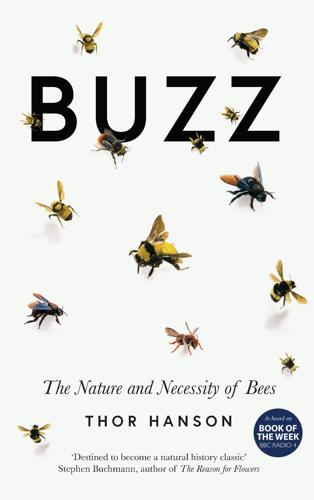
Buzz: The Nature and Necessity of Bees
by
Thor Hanson
Published 1 Jul 2018
He held it up, and I immediately recognized the gorgeous opalescent stripes of my favorite bee. But it was hard to reconcile a species that I had glimpsed and collected only once, and had always considered rare, with the thrumming multitudes around us. Mark’s bee beds, and those of his alfalfa-growing neighbors, embodied the cultural meme “If you build it, they will come.” Covering a total of more than 300 acres (120 hectares), those scattered beds provided prime habitat to an estimated 18 million to 25 million nesting females, not to mention at least that many males looking for mates. With the exception of commercial honeybees, it all added up to the largest population of pollinators ever measured, a buzzing metropolis known among bee researchers as the Eighth Wonder of the World.
…
During the peak of nest construction, females make as many as eighty round-trip flights to freshwater sources every day (Brooks 1983). 11 pretty much anywhere: Collapsible insect nets can also be tucked out of sight quickly, a handy trait in places where collecting might not be welcomed. Entomologists have been known to call them “National Park Specials.” 12 “If you build it, they will come”: This common expression is a slight misquote from the 1989 movie Field of Dreams, which featured an Iowa farmer constructing a baseball diamond in his cornfield after hearing a voice that whispered, “If you build it, he will come.” 13 untripped and unfertilized: The honeybee habit of robbing nectar from alfalfa flowers sets the stage for even higher levels of thievery.
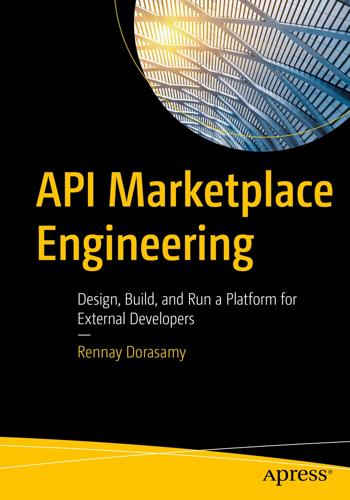
API Marketplace Engineering: Design, Build, and Run a Platform for External Developers
by
Rennay Dorasamy
Published 2 Dec 2021
Figure 3-1-1Non-technical overview of Twilio’s Message API Figure 3-1-2Simple, easy to relate to use-cases Figure 3-1-3Benefits of the service expressed without any technical jargon In the following sections, we review the key areas to be considered when building the “Business Portal” of your API Marketplace. Attract Although you can use a “Field of Dreams” strategy of “If you build it, they will come” – it may be more effective to actively market the Platform. Posts on social media, launch events, articles, and interviews on Technology, Entrepreneurship, and Startup websites will help draw potential users in. The key message on your main page, possibly the first thing a user sees, is your “elevator pitch” – how can our API Marketplace help your organization?
…
An API product approved by backend teams, Legal and Compliance, and delivered by the Technical team with little end user value will stay on the shelf waiting for its best before date to expire. We unfortunately have API products in our Marketplace which fall into this category. While building the API, it can become easy to stumble into the trap of “if you build it, they will come.” An early warning sign is difficulty in finding an actual use-case that an API would support. Step into a third-party consumer’s shoes and critically evaluate how it would help you achieve a specific outcome. If you have trouble with this task, chances are that the third party will too.
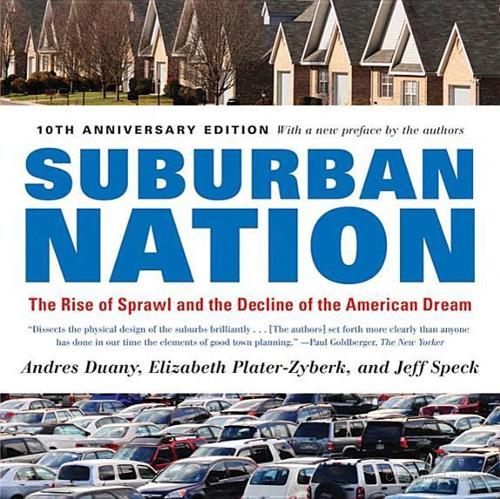
Suburban Nation
by
Andres Duany
,
Elizabeth Plater-Zyberk
and
Jeff Speck
Published 14 Sep 2010
THE PHYSICAL CREATION OF SOCIETY 1 “Parking Lot Pique,” A26. 2 Jonathan Franzen, “First City,” 91. 3 Jonathan Rose, “Violence, Materialism, and Ritual,” 145. 4 Le Corbusier, The City of Tomorrow and Its Planning, 129. 5 Jane Jacobs, The Death and Life of Great American Cities, 129. 5. THE AMERICAN TRANSPORTATION MESS 1 Jane Jacobs, The Death and Life of Great American Cities, 183. 2 Donald D.T. Chen, “If You Build It, They Will Come,” 4. 3 Ibid., 6. 4 Stanley Hart and Alvin Spivak, The Elephant in the Bedroom, 122. 5 Jane Holtz Kay, Asphalt Nation, 129. 6 Hart and Spivak, The Elephant in the Bedroom, 111; James Howard Kunstler, Home from Nowhere, 67, 99. 7 Hart and Spivak, The Elephant in the Bedroom, 166. 6.
…
City of Portsmouth, New Hampshire: Traffic/Trip Generation Study. Report by White Mountain Survey Company, December 1991. ————. Traditional Neighborhood Development Street Design Guidelines: A Recommended Practice of the Institute of Transportation Engineers. Washington, D.C.: Institute of Transportation Engineers, 1999. Chen, Donald D.T. “If You Build It, They Will Come … Why We Can’t Build Ourselves Out of Congestion.” Surface Transportation Policy Project Progress VII.2 (March 1998): 1, 4. Chira, Susan. “Is Smaller Better? Educators Now Say Yes for High School.” The New York Times, July 14, 1993: A1, B8. Collins, George, and Christiane Crasemann Collins.
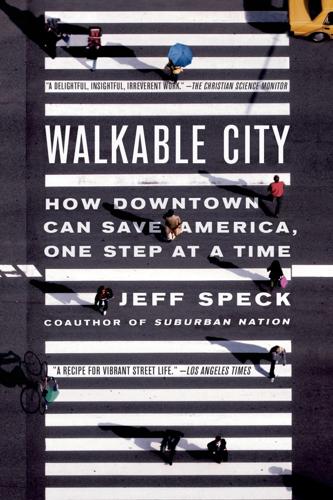
Walkable City: How Downtown Can Save America, One Step at a Time
by
Jeff Speck
Published 13 Nov 2012
Walkable Communities Inc., 1999. walkable.org/assets/downloads/roaddiets.pdf. Burke, Mia. “Joyride: Pedaling Toward a Healthier Planet.” planetizen.com, February 28, 2011. “Call for Narrower Streets Rejected by Fire Code Officials.” New Urban News. bettercities.net, December 1, 2009. Chen, Donald. “If You Build It, They Will Come … Why We Can’t Build Ourselves Out of Congestion.” Surface Transportation Policy Project Progress VII: 2 (March 1998): 1, 4. Children’s Safety Network. “Promoting Bicycle Safety for Children,” 2. childrenssafetynetwork.org, 2011. Clendaniel, Morgan. “Zipcar’s Impact on How People Use Cars Is Enormous.” fastcompany.com, July 19, 2011.
…
The largest corporation is, of course, Walmart, whose entire business model is based on cheap driving and trucking. ●Good news: upon further deliberation, the city skipped the study and added back the parking, without incident. ●“Does Widening Roads Cause Congestion?” Excerpted from Donald Chen, “If You Build It, They Will Come.” A 2010 study by Gilles Duranton and Matthew Turner at the University of Toronto concludes that “increased provision of interstate highways and major urban roads is unlikely to relieve congestion on these roads” (“The Fundamental Law of Road Congestion: Evidence from U.S. Cities,” 2616).
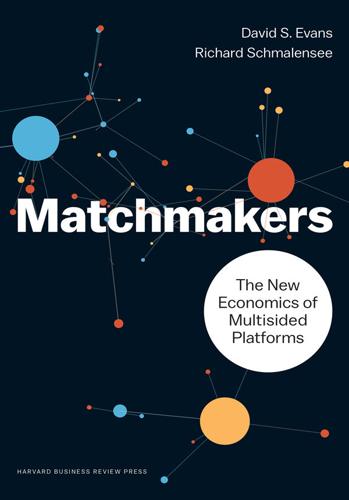
Matchmakers: The New Economics of Multisided Platforms
by
David S. Evans
and
Richard Schmalensee
Published 23 May 2016
As a result, YouTube couldn’t be sure how much value it would provide by facilitating video sharing, since video sharing had been effectively impossible. It turned out that people really wanted to share videos when they could, and that YouTube eliminated a significant friction. As we’ve noted before, in our experience, the biggest mistake platform entrepreneurs make is to embrace the “if you build it, they will come” fallacy. No, they won’t, unless the platform solves a big problem for participants and unless the entrepreneur cracks the chicken-and-egg problem. Without a significant friction to address, no matter how great a platform’s technology, there is no case for investing. Does the platform design reduce this friction, balance the interests of participants on all sides, and do it better than other entrants?
…
See also pricing of matchmakers, 12–14 network effects and, 22–27 on pricing, 15 Economist, 203–204 ecosystems, 36, 100–119 assessment of potential for, 151, 154 control in, 104–105, 106 creating healthy, 102–104 definition of, 103 mobile phone, 110–119 number of platform sides and, 109–110 edge providers, 42, 45–46 Edison, Thomas, 204 eHarmony, 203 e-mail Alibaba, 60 employee recruitment, 124 EMV terminals, 160–161 expectations, shaping, 80–81 externalities balancing, 128–129 behavioral, 136–140 definition of, 22, 136 network effects and, 22–23 participation and, 136–137 stock exchanges and, 139–142 Facebook, 28 advertising, 48 governance of, 135–138, 140, 146–148 number of platform sides in, 109 fairs, Renaissance, 200 FarmersOnly.com, 125 Farmville, 109 feedback effects, 57–58 financial services, 164, 167–181 Financial Times, 32 First Data Corporation, 157 first-mover advantages, 23–24, 27–28 fleet cards, 85–89, 90–92, 98–99 Foshan Plastic Sheets, 55–56 foundation multisided platforms, 40 Fox Searchlight Pictures, 27 fragmentation, 115–116 fraud, 138, 145–148 frictions, 7–20, 36, 55–68 Alibaba and, 59–63 assessment of, 151, 152–153 in B2B exchanges, 65–67 mobile phone industry, 112–119 OpenTable and, 7–8, 9–14 in procurement, 67–68 in retail, 61–63 Friendster, 28, 145–148 front-running, 139 Gates, Bill, 9, 151 global matchmakers, 39–40 go broad/go shallow strategy, 159 Goldman Sachs, 65 Google, 8 advertising, 48 Android operating system, 47–48, 101–102, 110–119 Chrome, 42 ecosystem for, 110–113 governance of, 144–145 Maps, 116 market cap of, 40 Ngrams, 24 pricing at, 93 Search, 127 shopping and, 185–186 Video, 82 YouTube bought by, 76 governance systems, 37, 135–148 behavioral externalities and, 136–140 enforcement of, 143–145 grabbing all the eyeballs, 21–37 growth zone, 77–78 Hangzhou Telecom, 58 Hastings, Reed, 191 HD-DVD platform, 26–27 Hengii Bearing Factory, 59 Hoist magazine, 124–125 HourlyNerd, 105 HTML, 42 Hurley, Chad, 69–70. See also YouTube “if you build it, they will come” fallacy, 152 ignition, 35–37, 68, 69–83 Apple Pay and, 159–164 assessment for, 151, 153 coordination problem and, 70–73 driving traffic and, 73–76 economic model for, 76–78 failure in, 82–83 modification of strategies for, 151, 154–155 at M-PESA, 174–178 at OpenTable, 11–12 pricing and, 82 strategies for, 78–82, 151, 154–155, 159–160 warning signs of failure in, 155–156 implosion zone, 77 infrastructure, 55–56 innovation creative destruction and, 49–51 in money movement systems, 166–181 in retail, 186–188 inputs, 15–16 Instacart, 12, 30 instant messaging, 61, 201 interactions, facilitating, 126–127 International TrustPass, 60–61 Internet, 19–20, 41–42 the Cloud and, 44–45 Internet content providers, 42 Internet service providers (ISPs), 45–47 fixed, 45 mobile, 45–46 Intuit, 18 iPhone, 100 Apple Pay, 149–150, 156–164 ecosystem for, 110 quality control and, 139 iPod, 113 ISPs.
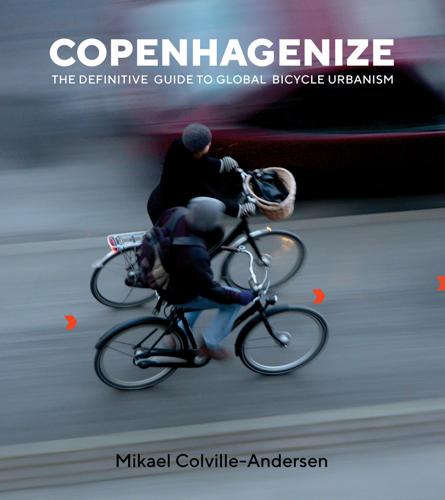
Copenhagenize: The Definitive Guide to Global Bicycle Urbanism
by
Mikael Colville-Andersen
Published 28 Mar 2018
If a motorist is sitting at a red light with five cars in front of them and 100 cyclists at the red light on the cycle track next to them, they can see it. “If those five schmucks were on bikes, I’d be the first car at the red light …” It’s rarely “me” with motorists, it’s “them”—but they get it. In short, if you build it, they will come. Time and time again. MYTH 9: WE HAVE SPRAWL! Many North American cities are, indeed, sprawled far and wide, thanks to several decades of flawed planning (although figuring out that it was flawed took a while), but I often get people commenting on the fact that American cities are way too big to ride in, compared to European cities.
…
There is a centuries-old saying in Russian that everyone knows: “There are only two problems in Russia: fools and roads.” Copenhagenize Design Company and the City of Almetyevsk just might have finally solved the latter. It is a wild ride that continues into 2017 and beyond. Quite possibly the most exciting urban design project in the world at the moment. If you build it, they will come. In the most unlikely places. And in Almetyevsk, they are coming by bike. The existing bicycle superhighway routes in Greater Copenhagen (orange) and the proposed routes (black). The Greater Copenhagen network superimposed on a map of Paris. THE BICYCLE DESERVES A SUPERHIGHWAY Many cities are expanding on their growing urban network for bikes by developing infrastructure that leads farther out.
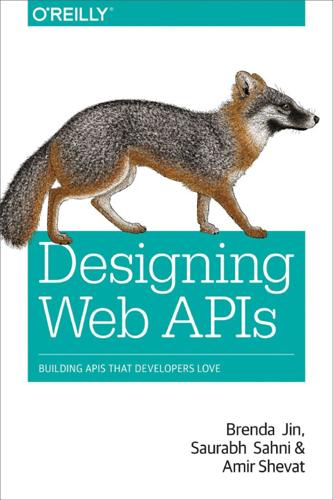
Designing Web APIs: Building APIs That Developers Love
by
Brenda Jin
,
Saurabh Sahni
and
Amir Shevat
Published 28 Aug 2018
In Chapter 8, we tell you all about building a developer ecosystem so that when the time comes to take your API to the next level, you’ll have lots of developers waiting to get those new additions. 142 | Chapter 7: Managing Change CHAPTER 8 Building a Developer Ecosystem Strategy Building a scalable, well-designed API is a great start, but if you want developers to use the API, you need to do much more than just release it. “If you build it, they will come” is a common misconcep‐ tion, as evidenced by the many companies that release APIs but do not understand why developers are not rushing to use them. The profession of building a developer and partner ecosystem is called developer relations. Let’s define what an ecosystem is in the context of a developer platform or an API.

Bacon: A Love Story: A Salty Survey of Everybody's Favorite Meat
by
Heather Lauer
Published 1 May 2009
The Scotts always had hogs that they slaughtered to make hams and bacon for their family, but gradually a few people from town asked if they could buy hams from them. So eventually they cleaned up an outbuilding to use for producing their hams, and operated their business from the space for about ten years. Thus proving that if you build it, they will come. The Scotts’ ham business became increasingly popular and after a while some of their customers started asking for bacon. “We had built a building by then because the USDA won’t let you do it in a chicken coop, so to speak!” says June. (So picky, those USDA inspectors.) The Scotts looked at their building and thought it wouldn’t take much room to put twenty-five sides of bacon in there.
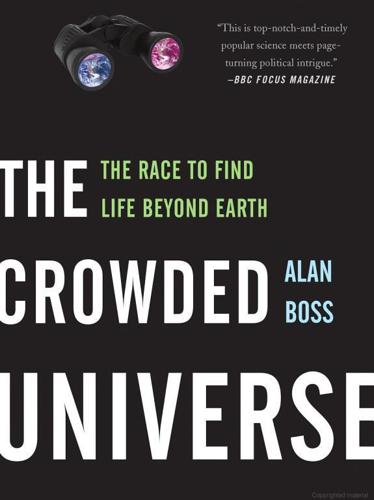
The Crowded Universe: The Search for Living Planets
by
Alan Boss
Published 3 Feb 2009
Perhaps Fermi’s Paradox was discussed in class that summer, perhaps not, but Fermi and Wetherill were physicists who evolved into two of the world’s first astrobiologists—scientists who seek to understand the genesis, evolution, and prevalence of life in the universe. This book has not addressed the question of how microscopic life originates on habitable planets, much less the intelligent life of Fermi’s Paradox, but has instead taken the position that “if you build it, they will come.” That is, if habitable worlds are common, what is to prevent their hosting the evolution of some sort of primitive life forms over their billions of years of existence? Not every planet needs to witness the evolution of Homo sapiens for life to be considered a universal trait; methanogenic bacteria would do quite nicely, provided that they are capable of generating enough methane to serve as a biomarker for some future space telescope.
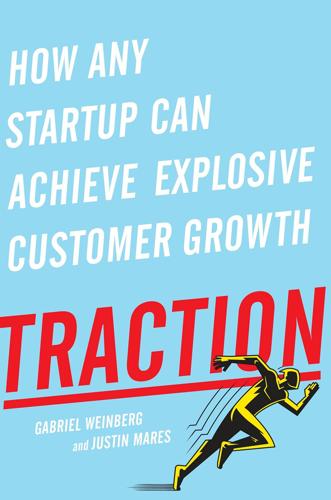
Traction: How Any Startup Can Achieve Explosive Customer Growth
by
Gabriel Weinberg
and
Justin Mares
Published 5 Oct 2015
The biggest mistake startups make when trying to get traction is failing to pursue traction in parallel with product development. Many entrepreneurs think that if you build a killer product, your customers will beat a path to your door. This line of thinking is a fallacy: that the best use of your time is always improving your product. In other words, “if you build it, they will come” is wrong. You are much more likely to develop a good distribution strategy with a good traction development methodology (like Bullseye) the same way you are much more likely to develop a good product with a good product development methodology (like Lean). Both help address major risks that face early-stage companies: market risk (that you can reach customers in a sustainable way) and product risk (that customers want what you’re building).

Survival of the Richest: Escape Fantasies of the Tech Billionaires
by
Douglas Rushkoff
Published 7 Sep 2022
MIT Media Lab founder Nicholas Negroponte’s much lauded One Laptop Per Child project expected to deliver 150 million $100 laptops to children in developing countries by the end of 2007. It didn’t go as planned. Many countries weren’t sure how they would use computers in their classrooms, particularly when their teachers were not digitally literate themselves. They didn’t accept Negroponte’s if-you-build-it-they-will-come premise that all kids of all cultures are born hackers who can just figure out an easy interface for themselves. By 2009, only a few hundred thousand had been shipped . African critics complained that issues such as HIV and malnutrition were impacting people and education more than a lack of technology.
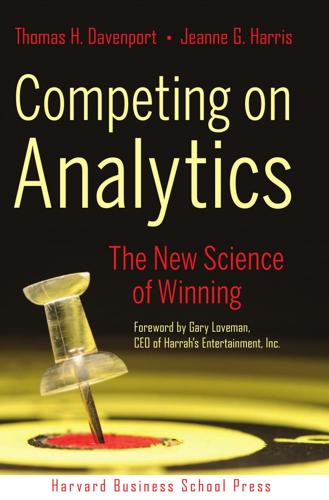
Competing on Analytics: The New Science of Winning
by
Thomas H. Davenport
and
Jeanne G. Harris
Published 6 Mar 2007
Taking an analytical approach to investment decisions, requiring accountability, and monitoring outcomes will help reinforce the analytical culture and maximize investments where they are likely to have the greatest impact. A common error is to assume that merely having analytical technology is sufficient to transform an organization. The Field of Dreams approach—“If you build it, they will come”—usually disappoints. If you build a data warehouse or a full-blown analytical technical infrastructure without developing the other analytical attributes, the warehouse will just sit there. Avoiding the Potholes Since every organization is different, we won’t attempt to provide detailed instructions to navigate around all the potential hazards encountered along the road map.
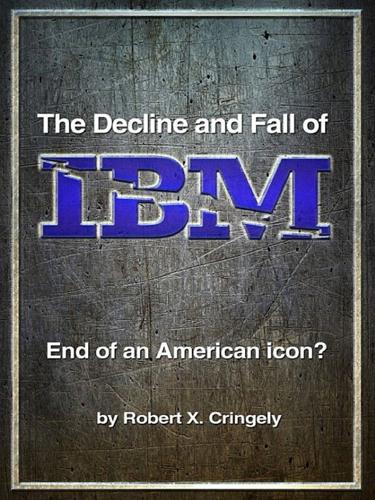
The Decline and Fall of IBM: End of an American Icon?
by
Robert X. Cringely
Published 1 Jun 2014
It may be easier and cheaper for companies to build their own Big Data databases in their own data centers. The right path will be decided by the Return on Investment (ROI). Doing ROI analysis from the customer and market point of view is not something IBM does well, or at all. IBM rarely starts a business from the customer’s perspective. IBM is more of a “If you build it, they will come—and pay any price” type of company. But will they come? Nobody knows. THE ANALYTICS SOLUTION: For IBM’s Analytics business to be successful it must carefully balance price with real quantifiable benefits. For the customer, this service must be a good return on investment. IBM has always been very good at telling its customers how good something will be, but promises only work for a short time.
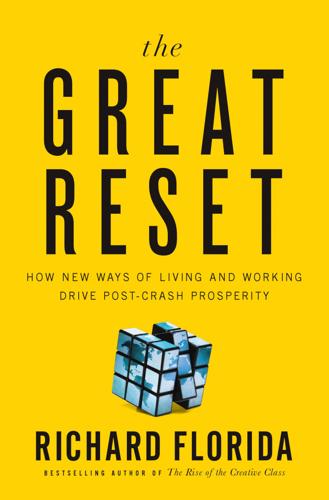
The Great Reset: How the Post-Crash Economy Will Change the Way We Live and Work
by
Richard Florida
Published 22 Apr 2010
Now these investments come mostly in other countries around the globe, from China to Spain and many places in between. Just as civilization sprang up along natural conduits such as rivers, bays, and valleys, towns sprang into existence along the streetcar and rail lines and highways as they were built. The high-speed rail lines will enable the fill-in I described, but they need to be in place first. If you build it, they will come. That may be an older, slightly hackneyed phrase that’s often used to deride new investment, but in the case of infrastructure it holds more than a grain of truth. In some ways, infrastructure is analogous to government support for basic research in medicine or the sciences. Such investments, which are either too large or too risky for private companies to undertake, offer a significant social rate of return that can drive future invention, productivity, and growth.
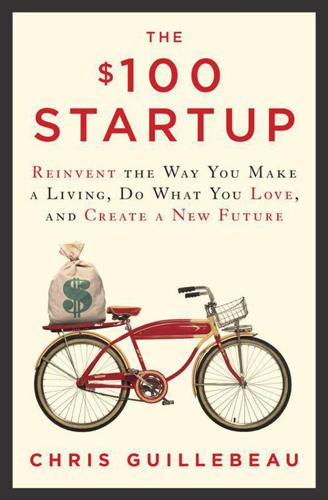
The $100 Startup: Reinvent the Way You Make a Living, Do What You Love, and Create a New Future
by
Chris Guillebeau
Published 7 May 2012
(This step may require further effort.) *You can find a review of several different payment options in the online resources at 100startup.com. Alas, like any trend or business model, not every story of independent publishing is a success. Many aspiring publishers operate on an “if you build it, they will come” model. Later in the book, we’ll rename it the “if you build it, they might come” model—sometimes it works, but many times it doesn’t, and there’s no guarantee of instant riches. For every online course that becomes a Mondo Beyondo-size success, many others flounder on with five participants.
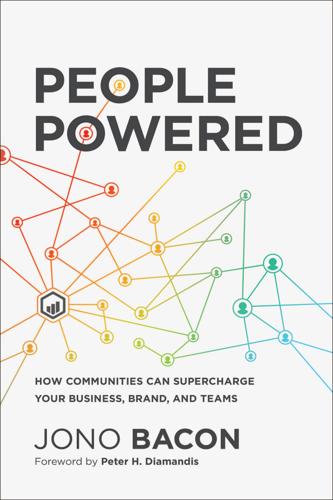
People Powered: How Communities Can Supercharge Your Business, Brand, and Teams
by
Jono Bacon
Published 12 Nov 2019
You can think of this as a lens through which to look at communities and a blueprint in which to approach them. This will give you the foundation of how to predictably build any number of different communities. There is no guaranteed success. I bet you didn’t want to hear that one, right? There simply is no guarantee you will succeed. “If you build it, they will come,” they say. Well, they are wrong. It should be, “If you build it, take a strategic approach, train and integrate your team tightly, carefully review results, modify your approach, and operate on a clear cadence, they will probably come.” Ugh, what a mouthful, but this is how we will approach this work.
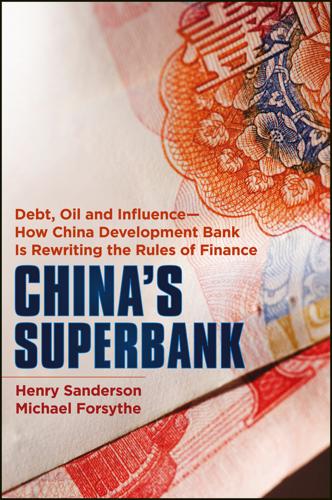
China's Superbank
by
Henry Sanderson
and
Michael Forsythe
Published 26 Sep 2012
That’s more than one-third of the 450 million square feet in Manhattan, a city that took more than three centuries of organic growth to build out its skyline. That includes a 1,930-foot-high tower, taller than the 1,770-foot-high 1 World Trade Center currently under construction in the real Manhattan. Tianjin officials are employing the philosophy of the 1989 movie, Field of Dreams: If you build it, they will come. Tianjin isn’t headquarters to a world-class bank, let alone a leading Chinese bank that could occupy those offices, as Goldman Sachs, Citigroup, and J.P. Morgan Chase fill Manhattan buildings. Xu mentions local banks Tianjin Rural Commercial Bank and Bohai Bank—minnows in the world of Chinese banking, let alone global banking—as future tenants.
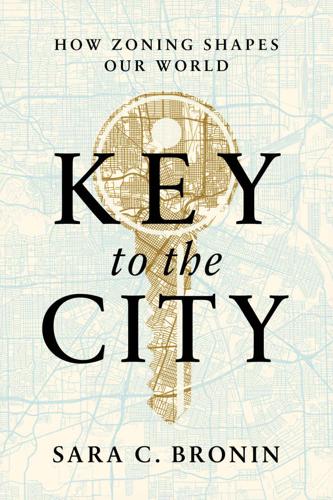
Key to the City: How Zoning Shapes Our World
by
Sara C. Bronin
Published 30 Sep 2024
These results are consistent with broader research. A study of greater Boston, for example, revealed that for every additional acre in average lot-size mandates, the number of permits declined by 40 percent over a twenty-year period. The inverse has proven true in Houston. Following the Field of Dreams “if you build it, they will come” model, Houston issues permits for almost three times the number of housing units per capita as New York City. One beneficial aspect of such prolific construction is that over the last decade, the city was able to house 25,000 previously unhoused people, cutting the homeless population by 63 percent.
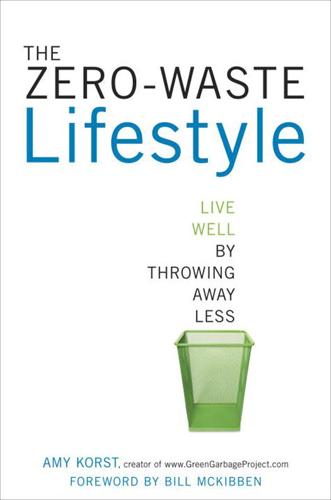
The Zero-Waste Lifestyle: Live Well by Throwing Away Less
by
Amy Korst
Published 26 Dec 2012
She nailed four lengths of wooden picket fencing together to set up a square compost pile in her backyard. At one time, Chris made a compost pile similar to Rose’s, but today he has a much more commercial model. “We don’t turn it a lot,” he says. “We have worms [in the pile], but we didn’t introduce them. If you build it, they will come.” Once your pile is ready to go, you start filling it with food scraps. If you’re brand new to composting, I’d recommend you start off with vegetable and fruit scraps to see how it goes. Eventually you may decide to do as I do and compost all food scraps except for meat (we even compost dairy and egg shells).
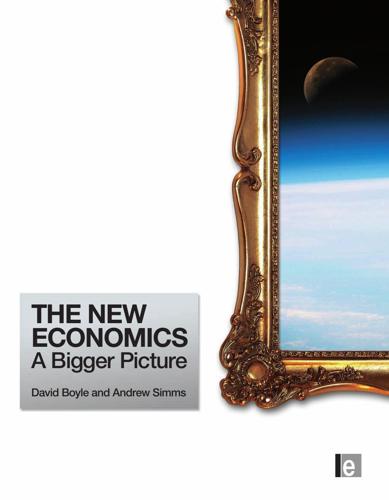
The New Economics: A Bigger Picture
by
David Boyle
and
Andrew Simms
Published 14 Jun 2009
63 9 Tax Justice Network (2005) The Price of Offshore, London. 10 Edgar Cahn (2000) No More Throwaway People: The Co-production Imperative, Essential Books, Washington DC. 11 Robert Skidelsky (1992) John Maynard Keynes Vol 2: The Economist as Saviour, Picador, London. 12 David Boyle (2003) Beyond Yes and No: A Multi-currency Alternative to EMU, New Economics Foundation, London. 13 James Robertson (2002) ‘The euro will prompt further monetary reform’, European Business Review, Vol 14, No 1. 14 Jane Jacobs (1986) Cities and the Wealth of Nations, Random House, New York. 15 Bernard Lietaer (2000) The Future of Money, Random Century, London. 16 Richard Douthwaite (1999) The Ecology of Money, Schumacher Briefings Number 4, Green Books, Totnes. 17 Tom Greco (1985) New Money for Healthy Communities, Greco, Tucson. 18 See, for example, David Boyle (ed) (2002) The Money Changers: Currency Reform from Aristotle to e-cash, Earthscan, London. 19 New York Times (1921) 4 December. 20 Stamp Out Poverty (2005) Submission to the Intergovernmental Working Group, London. 21 Joseph Stiglitz (2002) Globalisation and its Discontents, Norton, New York. 5 Markets: Why has London Traffic Always Travelled at 12mph? If you build it, they will come. Catchphrase in the film Field of Dreams Commercialisation of blood and donor relationships represses the expression of altruism. Richard Titmuss, The Gift Relationship (1970) London in 1900, the centre of empire. The Central Line underground railway is being constructed with picks and shovels.
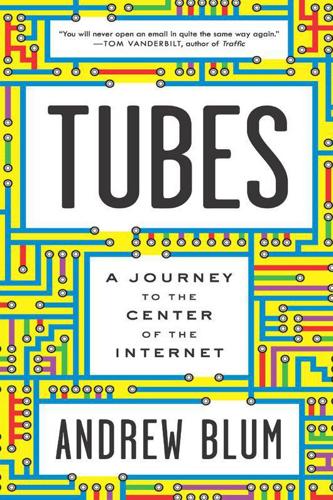
Tubes: A Journey to the Center of the Internet
by
Andrew Blum
Published 28 May 2012
Like any veteran politician, he was used to nosy journalists—although more than a small town’s share had been through here recently. The Dalles had felt the brunt of the industrial collapse of the Pacific Northwest, and the Internet’s neglect added insult to injury. “We said, ‘That’s not quick enough for us! We’ll do it ourselves,’ ” Young recalled. It was an act of both faith and desperation—the ultimate “if you build it they will come” move. In 2002, the Quality Life Broadband Network, or “Q-Life,” was chartered as an independent utility, with local hospitals and schools as its first customers. Construction began on a seventeen-mile fiber loop around The Dalles, from city hall to a hub at the BPA’s Big Eddy substation, on the outskirts of town.
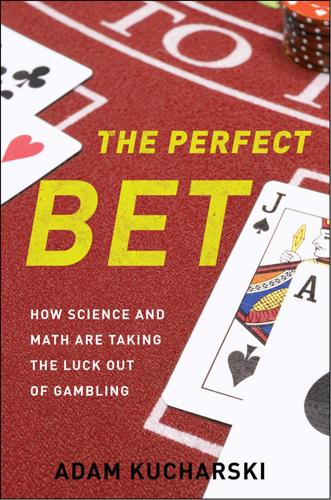
The Perfect Bet: How Science and Math Are Taking the Luck Out of Gambling
by
Adam Kucharski
Published 23 Feb 2016
Poker Works, April 11, 2008. http://pokerworks.com/poker-news/2008/04/11/where-are-they-now-jack-straus.html. 140the thirty-first World Series reached its finale: Details come from video of final at: http://www.tjcloutierpoker.net/2000-world-series-of-poker-final-table-chris-ferguson-vs-tj-cloutier/. TJ Cloutier Poker. “2000 World Series of Poker Final Table—Chris Ferguson vs TJ Cloutier.” October 12, 2010. 141“You didn’t think it would be that tough”: Paulle, Mike. “If You Build It They Will Come.” ConJelCo 31, no. 25 (May 14–18, 2000). http://www.conjelco.com/wsop2000/event27.html. 141no poker player had won more than $1 million: Wilkinson, Alec. “What Would Jesus Bet?” The New Yorker, March 30, 2009. http://www.newyorker.com/magazine/2009/03/30/what-would-jesus-bet. 141consultant for the California State Lottery: Johnson, Linda.
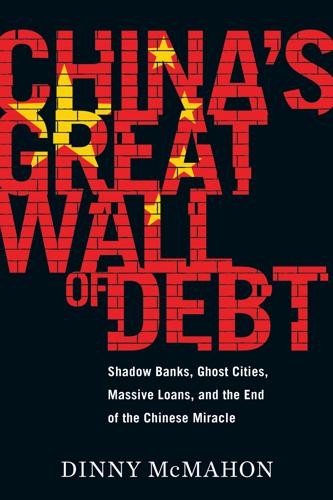
China's Great Wall of Debt: Shadow Banks, Ghost Cities, Massive Loans, and the End of the Chinese Miracle
by
Dinny McMahon
Published 13 Mar 2018
It is also an exception to the rule. Pudong was one of China’s very first new districts, but in recent years city building in China has spread to plague proportions. Rather than build incrementally, adding infrastructure if and when it becomes necessary, officials across the country have, herdlike, embraced the if-you-build-it-they-will-come model of urban planning. Ubiquitous as you hit the city limits of towns everywhere, new cities and districts come in all shapes and forms. In Luoyang, an industrial town in Henan Province, the new city—a cluster of large government buildings and office towers topped with the logos of state firms—is built around a lake that draws huge crowds of locals in summer for a laser show performed nightly to a recording of Carmina Burana.
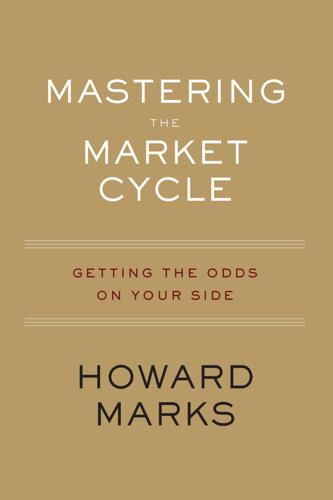
Mastering the Market Cycle: Getting the Odds on Your Side
by
Howard Marks
Published 30 Sep 2018
There have been numerous recent examples where loose capital markets contributed to booms that were followed by famous collapses: real estate in 1989–92; emerging markets in 1994–98; Long-Term Capital in 1998; the movie exhibition industry in 1999–2000; venture capital funds and telecommunications companies in 2000–01. In each case, lenders and investors provided too much cheap money and the result was over-expansion and dramatic losses. In the movie Fields of Dreams Kevin Costner was told, “If you build it, they will come.” In the financial world, if you offer cheap money, they will borrow, buy and build—often without discipline, and with very negative consequences. The capital cycle contributed tremendously to the tech bubble. Money from venture capital funds caused far too many companies to be created, often with little in terms of business justification or profit prospects.

The 100 Best Vacations to Enrich Your Life
by
Pam Grout
Published 14 May 2007
Students have ranged in age from 12 to 72, divided equally among men and women, and have traveled from as far away as Scotland, Hawaii, and Japan to take a course. The majority have little or no construction experience. Just so you know, once you have the know-how doesn’t mean you’ll have a house right away…it takes anywere from two to five years to build your new residence, depending on the time and help you have. * * * IF YOU BUILD IT, THEY WILL COME Critics—notably professional contractors—have scoffed that it’s impossible to teach a novice to build a house in two or three weeks. But Heartwood, and the other schools listed below, have proved them wrong. “America is based on pilgrims coming over here and knocking together log cabins,” says Patrice Hennin, founder of the Shelter Institute.
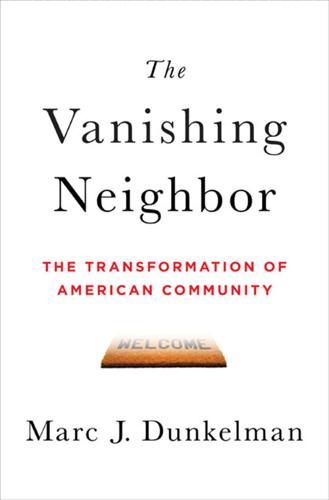
The Vanishing Neighbor: The Transformation of American Community
by
Marc J. Dunkelman
Published 3 Aug 2014
It is self-discipline that allows people to maintain relationships with acquaintances who don’t share their point of view. And so a community that weaves diverse neighbors together without self-control is more likely to disintegrate. This is not a situation where, as in Field of Dreams, “if you build it, [they] will come.”18 Figuring out a way to augment American grit will not magically reconstitute the middle-ring-rich communities of generations past. Nevertheless a grittier America would, at least, make it more likely that we’d each connect with a wider range of neighbors. We’d have greater wherewithal to maintain the dynamism of previous eras.

AI Superpowers: China, Silicon Valley, and the New World Order
by
Kai-Fu Lee
Published 14 Sep 2018
They were refashioning China’s urban landscape and the world’s richest real-world datascape. But building an alternate internet universe that reaches into every corner of the Chinese economy couldn’t be done without the country’s most important economic actor: the Chinese government. IF YOU BUILD IT, THEY WILL COME On that front, Guo Hong was ahead of the curve. In the years after his first visit to my office, his dream of an Avenue of the Entrepreneurs had been turned into a plan, and that plan turned into action. Guo chose for his experiment a pedestrian street in Zhongguancun that was home to a mishmash of bookstores, restaurants, and knockoff electronics markets.
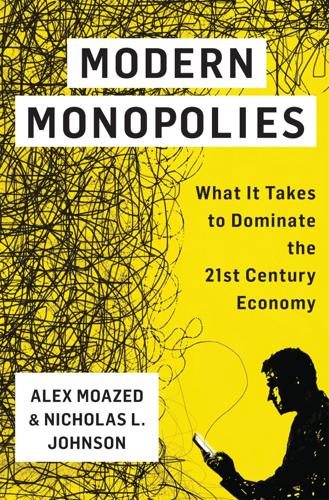
Modern Monopolies: What It Takes to Dominate the 21st Century Economy
by
Alex Moazed
and
Nicholas L. Johnson
Published 30 May 2016
That Color’s seasoned execs failed to see this issue coming is shocking. The ghost town problem that brought down Color is hardly unique. Yet Color CEO Nguyen seemed confident that its sophisticated technology alone would “wow” users, even though the company did little external testing and had no discernible launch strategy. This if-you-build-it-they-will-come attitude is surprisingly common, even among experienced tech investors and executives. That’s also why Color couldn’t figure out how to jump-start its network. Technology alone isn’t enough, especially when the platform has little value without the participation of other users. Color isn’t the first platform to fail on these grounds, and it will certainly not be the last.

Israel: A Simple Guide to the Most Misunderstood Country on Earth
by
Noa Tishby
Published 5 Apr 2021
Rawabi is a shiny city on a hill, complete with brand-new buildings made out of white stones cut from a nearby quarry. Many believe that this project is the beginning of the Palestinian people’s pivot toward taking charge of their own future, a future of industry, equality, liberalism, and empowerment. Masri understood a very simple thing: if you build it, they will come. He is not your token Palestinian friend. Rawabi is not your token Palestinian city. They are both what the future of the Palestinian people and the Palestinian state can be. THE CLOSER YOU LOOK, THE MORE COMPLICATED IT GETS To understand the region and the issues facing the Palestinian people, I had to clarify the very different obstacles they are dealing with, dictated by geographic location, history of conflict, political affiliations, and religious agenda.

Paper Girl: A Memoir of Home and Family in a Fractured America
by
Beth Macy
Published 6 Oct 2025
“It’s that loss of grit,” Seeberg said. “It’s mental health, parents’ inability to parent, general population decline.” He cited the new Intel microchip plant that was being developed in nearby New Albany, Ohio, boosted by $8.5 billion from President Joe Biden’s CHIPS and Science Act. Seeberg wasn’t sure the if-you-build-it-they-will-come strategy still worked in an era of sky-high childhood trauma and a severe shortage of tradespeople. Dubbed Silicon Heartland, the plant promised to be the “largest silicon manufacturing location on the planet,” part of Biden’s efforts to re-shore manufacturing and make America less dependent on overseas supply chains.
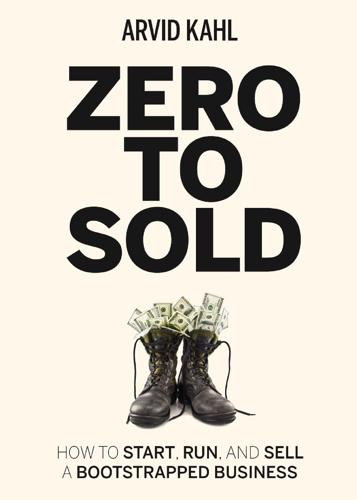
Zero to Sold: How to Start, Run, and Sell a Bootstrapped Business
by
Arvid Kahl
Published 24 Jun 2020
If you do this for all the choices you will need to make, you'll end up with a very maintainable collection of technologies that will stand the test of time. From Product to Business A Well-Oiled Machine A product is not a business—just yet. That's an important thing to understand, particularly when you're a technical founder. It's the reason the book The E-Myth exists: the entrepreneurial myth is that if you build it, they will come. But they won't unless you put in the effort to create a reliable system to sell the product at a profit continuously: a business. A business is more than a landing page, a product, and a bank account. A business is a complex system of processes. Building a product may come easy to you if you're technically inclined, but turning it into a value-generating machine is a whole different kind of challenge.
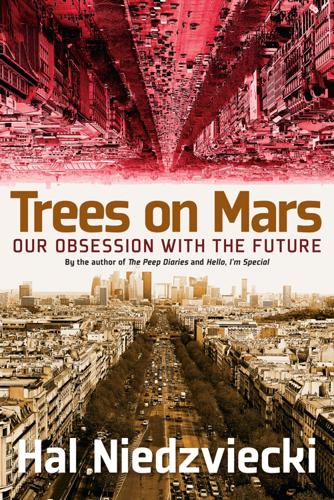
Trees on Mars: Our Obsession With the Future
by
Hal Niedzviecki
Published 15 Mar 2015
After the responses he got at the pitch session at SXSWi and recent experiences with app functionality problems in actual bars and restaurants, Ryan laments adopting the future-now strategy popularized in hundreds of books and articles about building and launching start-ups. “We should have tested it,” he tells me. “Everyone thinks if you build it they will come . . .” He’s spent eight months of time and estimates his sweat equity at $15,000 in personal labor done after his day job as part of an innovation team for a health care company. Alas, all that work and energy and investment, and Tappr seems destined for the dustbin before it’s even been fully completed.
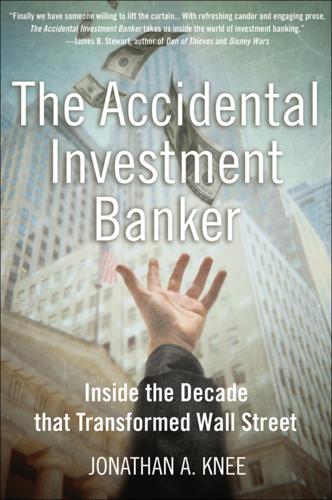
The Accidental Investment Banker: Inside the Decade That Transformed Wall Street
by
Jonathan A. Knee
Published 31 Jul 2006
Unlike technology, where a company like Webvan that required significant investment in physical infrastructure (“bricks and clicks” was how such businesses sold themselves) was the exception rather than the rule, the emerging telecom segment was highly capital intensive in nature, soaking up money for laying cable, building cell towers, buying switching equipment and so on. These businesses were largely financed on the Field of Dreams theory—if you build it, they will come. They didn’t come, or at least not fast enough to avoid what were once a multitude of multibillion-dollar public companies from ultimately going bankrupt or being swallowed up for scrap value. Like their Internet counterparts, these businesses never generated earnings, but they sometimes did show positive EBITDA (which, it will be remembered, means “earnings before interest, taxes, depreciation, and amortization”).
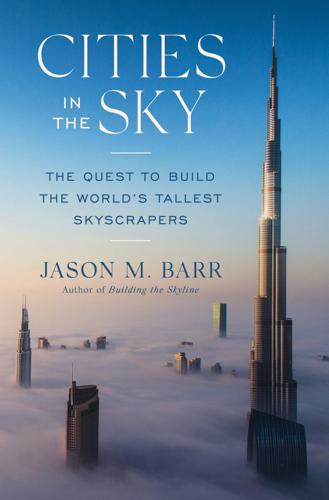
Cities in the Sky: The Quest to Build the World's Tallest Skyscrapers
by
Jason M. Barr
Published 13 May 2024
On the one hand, New York and Chicago’s historical skylines emerged “spontaneously” as their land values hit thresholds, incentivizing the construction of tall buildings. This can be summarized as the “spontaneous eruption” theory or the “skyscrapers follow urban growth” theory. On the other hand, some cities, especially in Asia, have seemingly used skyscrapers as a so-called Field of Dreams strategy—if you build it, they will come—in order to leapfrog over rival cities. Arguably, this began, as mentioned earlier, in Kuala Lumpur, with the Petronas Towers, in 1998. But perhaps no other city has so fully embraced the skyscraper as an economic development strategy as Dubai. Nonetheless, the Burj Khalifa is viewed as a pure “ego play” to try to get the world’s attention.

They All Came to Barneys: A Personal History of the World's Greatest Store
by
Gene Pressman
Published 2 Sep 2025
I went to Gordon Chadwick, who had designed the ground floor of the International House, and with a million-dollar budget, began sketching out a plan for a larger women’s space, two floors of it on six and seven, at the top of the store. The Penthouse was to be an aspirational space for aspirational merchandise. Did we know it would set the tone for the store for decades to come? We did not. We just had a hunch: If you build it, they will come. By early 1978, the women’s section was taking over three, filling up with Louise’s and my collections, a mostly European mix of influential designers. Armani. Versace’s Complice and Genny. The first collections by Gianfranco Ferré, the heavyset don of Milan. (He later took over Dior.)
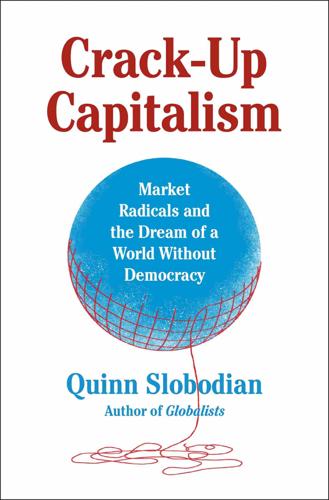
Crack-Up Capitalism: Market Radicals and the Dream of a World Without Democracy
by
Quinn Slobodian
Published 4 Apr 2023
Paul Watt, “‘It’s Not for Us’: Regeneration, the 2012 Olympics and the Gentrification of East London,” City 17, no. 1 (2013): 101. For a pioneering analysis, see Neil Smith, The New Urban Frontier: Gentrification and the Revanchist City (New York: Routledge, 1996). 128. Wiig, “Incentivized Urbanization in Philadelphia,” 112. 129. Jack Brown, “If You Build It, They Will Come: The Role of Individuals in the Emergence of Canary Wharf, 1985–1987,” London Journal 42, no. 1 (2017): 71. 130. Richard Disney and Guannan Luo, “The Right to Buy Public Housing in Britain: A Welfare Analysis,” Journal of Housing Economics, no. 35 (2017): 51–53. 131. Stuart Hodkinson, “The New Urban Enclosures,” City 16, no. 5 (2012): 510–14; and Christian Hilber and Olivier Schöni, “In the United Kingdom, Homeownership Has Fallen While Renting Is on the Rise,” Brookings Institution, April 20, 2021, https://www.brookings.edu/essay/uk-rental-housing-markets/. 132.
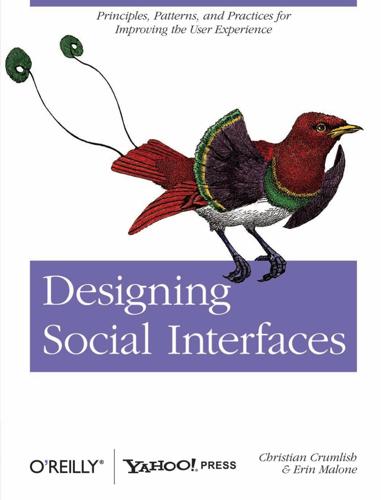
Designing Social Interfaces
by
Christian Crumlish
and
Erin Malone
Published 30 Sep 2009
Potemkin Village (Anti-Pattern) Users may want separate areas for discussing separate topics, and site creators may have an elaborate vision of a complex arrangement of topic and groups, but instead of creating a complicated empty scaffolding in hopes of enticing community to take root (the “if you build it, they will come” fallacy), start small and compact, and then prepare to grow organically (Figure 15-3). Create one main topic, a pinned (permanently on top) welcome topic, and perhaps a separate help topic, and nothing else. Resist the urge to anticipate the contours of the conversations and groups. Wait until people are begging for a subtopic, then fork the original group.
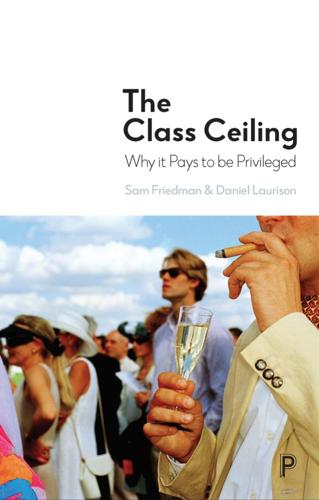
The Class Ceiling: Why It Pays to Be Privileged
by
Sam Friedman
and
Daniel Laurison
Published 28 Jan 2019
Stuff that 95 The Class Ceiling you feel is significant and important and changing things … I sound like some twat [laughs]. But that is what is crazy about being an actor – people listen to you, they’ve paid to listen to you, they want to be affected. So yeah, once that really clicked – that if-you-build-it-they-will-come kind of idea – it had huge appeal. Rather than the [typecast] look-at-mein-my-dress-running-around-a-lake-kind-of-thing. It is clear that Molly has found a place in the acting labour market where she can very effectively resist the narrowness of her typecasting. This is undoubtedly the result of much hard work and a writing talent widely recognised by industry peers.

Who Owns the Future?
by
Jaron Lanier
Published 6 May 2013
Humbling. There is an interaction between optimism and achievement that seems distinctly American to me, but that might only be because I am an American. Our pop culture is filled with the message that optimism is part of the magical brew of success. Manifest Destiny, motivational speakers, “If you build it, they will come,” the Wizard of Oz giving out his medals. Optimism plays a special role when the beholder is a technologist. It’s a strange business, the way rational technologists can sometimes embrace optimism as if it were a magical intellectual aphrodisiac. We’ve made a secular version of Pascal’s Wager.
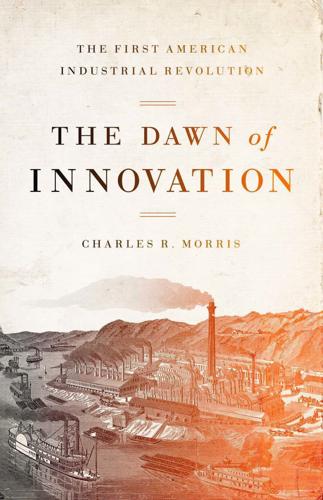
The Dawn of Innovation: The First American Industrial Revolution
by
Charles R. Morris
Published 1 Jan 2012
The roads offered clear graded routes for stringing telegraph lines, and station managers conveniently doubled as telegraph operators; the benefit for the roads was that the telegraph, for the first time, allowed them to track and manage their far-flung freights and rolling stock. There were other, less obvious symbioses. The western railroads were typically built far ahead of traffic—“If You Build It, They Will Come.” The roads benefited from both state and federal land grants in wide swaths on both sides of their tracks. In order to create future freights, they frequently transferred their land to farmers on highly advantageous terms. Much of the early risk capital came from the British, who regarded American railroad bonds as the equivalent of today’s high-yield paper: defaults were to be expected, but the returns were still attractive.
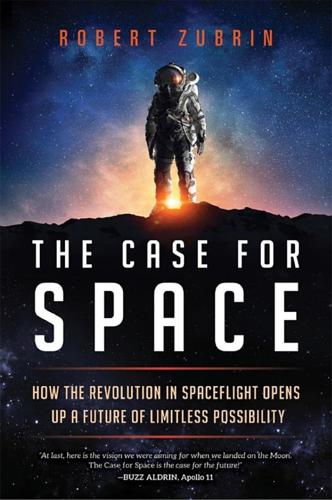
The Case for Space: How the Revolution in Spaceflight Opens Up a Future of Limitless Possibility
by
Robert Zubrin
Published 30 Apr 2019
In that case, four hundred thousand units would have to be sold per year. Given a sufficiently desirable and unique product, sales numbers such as these are entirely feasible. SPACE BUSINESS PARKS The idea of the space business park is not to define the business but to create the infrastructure to support any need. If you build it, they will come—or so the theory goes. In other words, you build a large spacecraft with a truss, a power array, attitude control systems, and some pressurized modules, and then you announce that you have space on orbit for rent. Perhaps your first customer might be an orbital research outfit. That would be logical; as we have seen, of all the orbital businesses we have discussed so far, research has the best chance of producing a big profit under near-term technological assumptions.
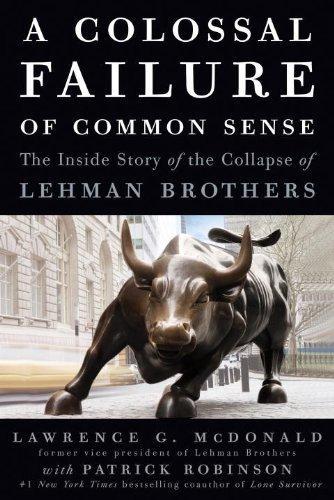
A Colossal Failure of Common Sense: The Inside Story of the Collapse of Lehman Brothers
by
Lawrence G. Mcdonald
and
Patrick Robinson
Published 21 Jul 2009
The image is useful, because one of the most irritating aspects of modern finance is that the numbers tend to be so enormous that they can’t really be grasped. Christine Daley was still smiling, for she had long ago sensed that the head honchos at Calpine operated their business along the guidelines laid down by Field of Dreams: if you build it, they will come. And while those guidelines might have been rock solid when it came to ghostly ballplayers in a cornfield, they did not apply to electricity consumption in the twenty-first century. Calpine was building it, but they weren’t coming. As summer drew to a close the Lehman trading floors remained inordinately busy.
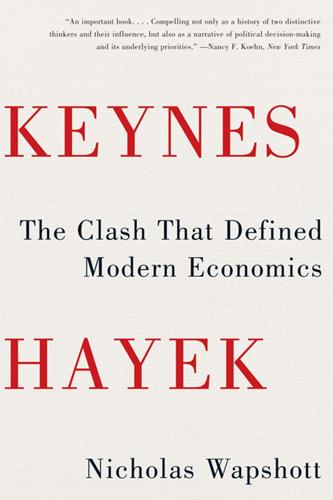
Keynes Hayek: The Clash That Defined Modern Economics
by
Nicholas Wapshott
Published 10 Oct 2011
Kennedy. 24 John Kenneth Galbraith, “General Keynes,” New York Review of Books, November 22, 1983. 25 Harrod, Life of John Maynard Keynes, p. 451. 26 J. M. Keynes, The General Theory of Employment, Interest and Money (Macmillan, 1936; facsimile reprinted by Harcourt, Orlando, Fla.), p. 34. 27 Ibid., p. 3. 28 Ibid., p. 16. 29 In the words of the philosophy that underpins the plot of the 1989 movie Field of Dreams, “If you build it, they will come.” 30 Keynes, General Theory (Macmillan, 1936; facsimile reprinted by Harcourt, Orlando, Fla.), p. 19. 31 Ibid., p. 21. 32 Ibid., p. 179. 33 Ibid., p. 211. 34 Ibid., p. 129. 35 Ibid., p. 130. 36 Ibid., p. 379. 37 J. M. Keynes, The General Theory of Employment, Interest and Money, German edition (Duncker & Humblot, Berlin, 1936), preface. 38 Keynes, General Theory (Macmillan, 1936), p. 379. 39 Ibid., p. 380. 40 Interview of Robert Skidelsky, July 18, 2000, for Commanding Heights: The Battle for the World Economy, PBS, http://www.pbs.org/wgbh/commandingheights/shared/minitext/int_robertskidelsky.html. 41 Keynes, General Theory, (Macmillan, 1936), p. 378. 42 Ibid., p. 60. 43 Ibid., p. 80. 44 Ibid., p. 214.

Bad Pharma: How Medicine Is Broken, and How We Can Fix It
by
Ben Goldacre
Published 1 Jan 2012
Clinical trial enrollers vs. nonenrollers: The Cardiac Arrhythmia Suppression Trial (CAST) Recruitment and Enrollment Assessment in Clinical Trials (REACT) project. Controlled Clinical Trials. 1996 Feb;17(1):46–59. 8 Sheppard VB, Cox LS, Kanamori MJ, Cañar J, Rodríguez Y, Goodman M, et al. BRIEF REPORT: If You Build It, They Will Come. J Gen Intern Med. 2005 May;20(5):444–7. 9 ACRO – CRO Market [Internet]. [cited 2012 Feb 11]. Available from: http://www.acrohealth.org/cro-market1.html. 10 MacDonald T, Hawkey C, Ford I. Time to treat as independent. BMJ. 2010 Nov 30;341(nov30 2):c6837–c6837. 11 Kassirer J. On the Take: How Medicine’s Complicity with Big Business Can Endanger Your Health.

The Rights of the People
by
David K. Shipler
Published 18 Apr 2011
“I’m just as upset at the library’s keeping the records as at the government’s keeping the records,” German remarked a month before Christian was served with the NSL. The same could be said about phone companies, Internet providers, and a host of other private entities whose records are exposed to government snooping. “If you keep it, they will come,” said Alan Davidson, senior policy counsel for Google. “Just like in Field of Dreams: If you build it, they will come.” If it’s available, investigators and intelligence agents will want to look at it. So Google, which used to keep all records indefinitely to help evaluate and improve its mammoth search engine, imposed an eighteen-month limit, then shortened it to nine months and may go lower on files linking computer IP addresses to Web-page searches on the Internet.15 The company has debated internally how to weigh the preservation of privacy—from government, commercial, and criminal intruders—against the business’s needs to polish its performance.

Yucatan: Cancun & Cozumel
by
Bruce Conord
and
June Conord
Published 31 Aug 2000
TOURIST INFORMATION: Tourism information in this friendly town is next to the city hall on Calle 40 at the corner of 41. TOWN TOURS: A two-hour bus tour in an open trolley-style bus, La Guagua, departs every Sunday in front of the cathedral at 9 am and 4 pm (US $5). TRANSPORTATION: A whispered voice may have said “If you build it, they will come” to optimistic state government officials who spent big bucks in 2000 building a huge new Chichén Itzá International Airport near Káua (pronounced kawa), about half-way between Valladolid and the ruins. They hope that more tourism will result because charter and scheduled flights from Europe will want to land there instead of Cancún or Mérida.
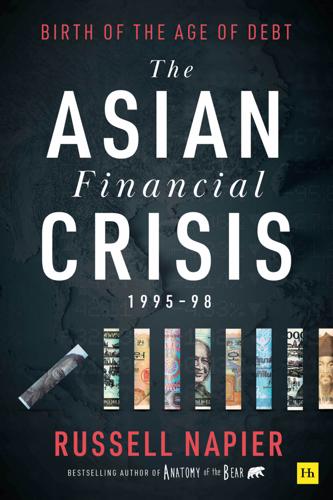
The Asian Financial Crisis 1995–98: Birth of the Age of Debt
by
Russell Napier
Published 19 Jul 2021
Our best estimate of the current schedule of mega-projects is as follows: the world’s two tallest buildings (the Petronas towers), the world’s longest building (Giga-city), Asia’s biggest hydro-electric dam (Bakun), a new administrative capital (Putrajaya), a new airport, new sports arenas (Commonwealth Games), a new industrial zone with its own capital (the Multi-Media Super Corridor and CyberJaya), the city on stilts (off Johor), the world’s biggest reclamation project (off the north-west coast) and a 22km bridge (Malaysia to Indonesia). You may be sceptical, but remember the success of Kevin Costner in Field of Dreams: “If you build it, they will come.” They did only build some of it, but they did come – it just took a while and too long, in most cases, to create the cash flow to service the debt associated with the investment. Based on my conversations with investors in the first half of 1997, none of these grand plans created particular cause for concern.
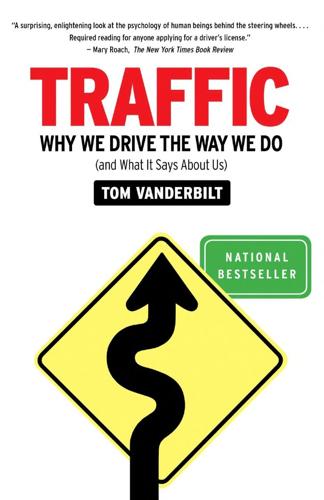
Traffic: Why We Drive the Way We Do (And What It Says About Us)
by
Tom Vanderbilt
Published 28 Jul 2008
The traffic may rise, as engineers predict, but that in itself may discourage drivers from entering a more difficult traffic stream. Or it may not. Los Angeles currently operates with a freeway system largely built in the 1950s and 1960s. Its engineers never imagined the levels of traffic the city now sees. As John Fisher, head of the city’s DOT, put it, “They say, ‘If you build it, they will come.’ Because we didn’t build it doesn’t mean the people stopped coming. Freeways weren’t built, but the traffic is still coming anyway. There’s more and more traffic. The bottom line is that the L.A. area is going to be a magnet whether we build freeways or not. People are still going to want to come here.”

Aerotropolis
by
John D. Kasarda
and
Greg Lindsay
Published 2 Jan 2009
In response, Berdyne built a coalition of farms piece by piece, grid square by square. “Ain’t none of them can sell. I’ve got ’em locked up.” He grinned wolfishly. As I stood to leave, he shot me a last piece of advice, one that seemed especially pertinent considering the airfield of dreams set to be paved through his yard: “ ‘If you build it, they will come.’ It works for baseball, but it doesn’t work for airports.” Illinois farmers knew from experience. Lying several hundred miles southwest of here is Peotone’s abandoned twin. MidAmerica St. Louis Airport opened east of the Mississippi River amid cornfields in 1997 to relieve pressure on the city’s hub—pressure that disappeared when TWA went bankrupt shortly thereafter.

May We Be Forgiven
by
A. M. Homes
Published 14 Jun 2012
My family has been here for a very long time. I am all that remains.” “Noble,” I say. He shakes his head. “I am not so noble, I am practical. I don’t want my village to die. There was nothing left, no more reason for anyone to be here except that we have always been here. That is how Nate came to us. ‘If you build it they will come,’” he says, and laughs. “I am quoting from Close Encounters of the Third Kind, when Richard Dreyfuss builds a mountain of mashed potatoes.…” The way Sakhile says “potatoes,” pronouncing each syllable like it was a word itself, makes potatoes sound delicious. “I think that’s from Field of Dreams, the baseball movie with Kevin Costner.

The Bill Gates Problem: Reckoning With the Myth of the Good Billionaire
by
Tim Schwab
Published 13 Nov 2023
The Gates Foundation’s grant making over the years is littered with similar projects, like donations to a group called DKT “to develop and demonstrate a sustainable private sector model for increasing and sustaining demand for Sayana Press [a Pfizer injectable contraceptive] in key geographies.” With its massive investment in hormone implants for FP2020, the foundation could be seen as taking demand creation into a kind of Field of Dreams scenario—not so much “If you build it, they will come” but, rather, “If you flood the market, they’ll have no other choice.” While coercion is little studied in family planning, there are two independent reports documenting its appearance as FP2020 moved aggressively to enroll 120 million women onto contraceptives. In 2019, Leigh Senderowicz published a study that found that clinics and providers were organizing their workloads around meeting quotas, overemphasizing the advantages of some kinds of contraceptives over others, and even using scare tactics to get women on contraceptives.

Wired for War: The Robotics Revolution and Conflict in the 21st Century
by
P. W. Singer
Published 1 Jan 2010
Despite the fact that the drone had no buyers, the Blues and General Atomics believed in the technology. The company renamed the Amber drone and began production even though there was no set buyer. In a sense, General Atomics took the Field of Dreams approach to defense contracting that iRobot did with UGVs: “If you build it, they will come.” The CIA soon came shopping and the drones, now called by the more fearsome-sounding “Predator,” saw action in the Balkans. And the rest is robot history. The story of the Blues and General Atomics is a classic story of how an industry upstart can shake up the system. This small-company approach to contracting carries over to other parts of General Atomics.

USA's Best Trips
by
Sara Benson
Published 23 May 2010
Bafflingly, well-known modern artist Donald Judd chose a barren local patch to set up his abstract “Boxes” installation. The Chinati Foundation today sprawls over several buildings and exhibits like-minded artists. Through the years Marfa has accumulated a surprising number of artists and galleries. Apparently if you build it, they will come. Pick up a walking map from the chamber of commerce (www.marfacc.com; corner W Lincoln St and N Highland Ave); the main concentration of galleries is on San Antonio St. Dining later on one of the creative meals at Cochineal only seems appropriate. A global gourmet restaurant in the middle of a desert?

Palo Alto: A History of California, Capitalism, and the World
by
Malcolm Harris
Published 14 Feb 2023
Supply and demand determine commodity prices—though not nearly so directly as we’ve been led to believe—and if someone orders a loaf of bread, you can’t tell the hungry customer to hold on while you build a railroad, a farm, a mill, and a bakery. Capital and capitalists built the lines, under logic much closer to “If you build it they will come” (or even “There’s a sucker born every minute”) than to “Give the people what they want.” As Richard White explains in his book Railroaded: The Transcontinentals and the Making of America, many if not all of the railroads were nonsensical from a consumer supply-and-demand perspective.